In 2025, rental prices in the U.S. will continue to vary significantly based on geographic location, economic factors, and local demand. New York City leads as the most expensive market with an average 1-bedroom rent of $4,509, followed by San Francisco at $3,274 and San Jose at $2,800.
These cities are driven by high demand, particularly in tech and finance sectors, leading to elevated rents.
In contrast, cities like Indianapolis and Columbus offer significantly lower rents, averaging $1,490 and $1,480, respectively, highlighting the affordability of markets outside major coastal hubs.
Key statistics show the growing disparity: 53% of U.S. renters pay more than 30% of their income on rent, with major cities like Miami ($1,950) and Atlanta ($1,610) facing increasing pressures due to population growth and job market shifts.
Utilities, transportation, and grocery costs also contribute to the overall cost of living, with cities like San Francisco having higher utility costs ($200/month) and Washington D.C. and Los Angeles reflecting similar trends.
These data points offer critical insights for renters deciding where to live, as the choice of city can significantly impact overall affordability.
Table of Contents
Toggle1. New York, NY
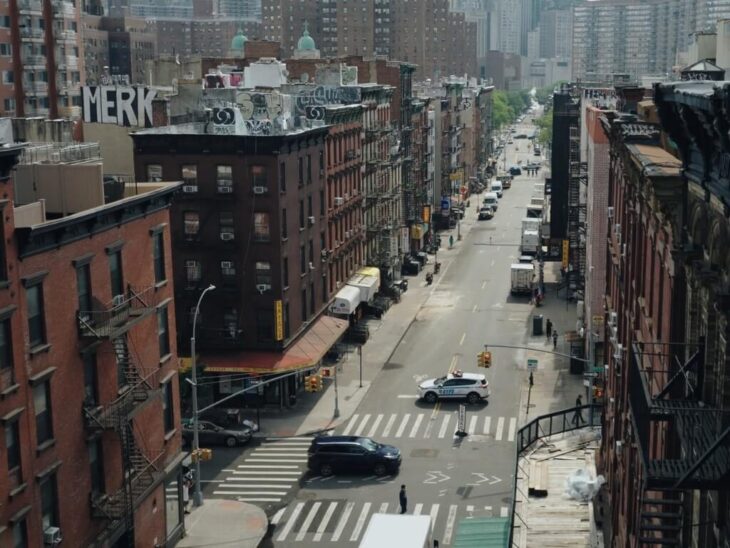
New York City is known for its vibrant culture, world-class amenities, and endless opportunities, but these perks come at a price. With Manhattan, Brooklyn, and parts of Queens being among the most expensive areas to live in the country, rent prices are steep.
The high rent reflects the city’s desirability as a global hub for business, arts, and entertainment. The median rent in neighborhoods like Tribeca and SoHo often exceeds $5,000 for smaller apartments, while more affordable options can be found in the outer boroughs, such as Staten Island or parts of Harlem.
That said, New York’s cost of living remains one of the highest in the nation, with high demand for both luxury and standard apartments.
| City | Average Rent (1-Bedroom) | Median Household Income | Utilities | Transportation | Grocery Cost (One Person) |
| New York, NY | $4,509 | $70,000 | $150/month | $127 (MetroCard) | $350/month |
2. San Francisco, CA
San Francisco has long been one of the most expensive rental markets in the U.S., driven by the proximity to Silicon Valley and the technology sector.
The rental market is dominated by young professionals and tech employees who are willing to pay high prices for modern apartments. While rental prices have slightly stabilized in recent years, areas like SoMa and Pacific Heights remain prime real estate with rental prices above the city’s average.
San Francisco’s cost of living is not just about rent, though. Utilities, transportation, and groceries are all on the higher end compared to most cities.
| City | Average Rent (1-Bedroom) | Median Household Income | Utilities | Transportation | Grocery Cost (One Person) |
| San Francisco, CA | $3,274 | $112,000 | $200/month | $98 (Clipper Card) | $400/month |
3. San Jose, CA
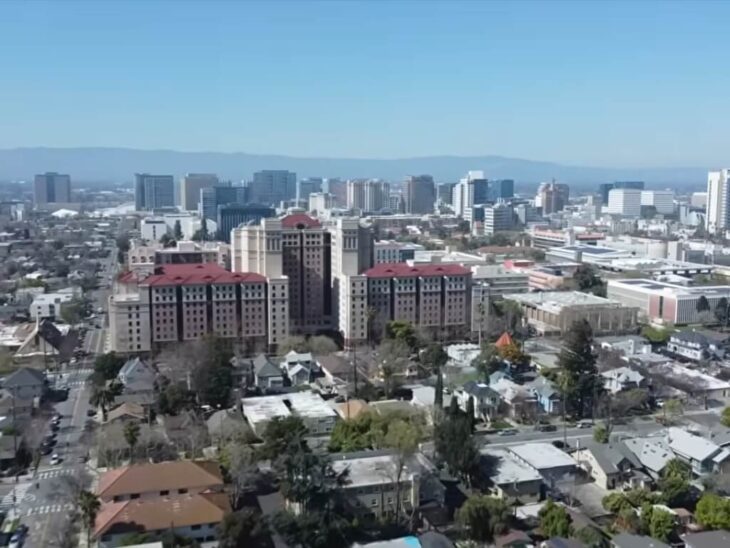
San Jose, located at the heart of Silicon Valley, faces similar challenges to San Francisco in terms of high demand for rental properties due to the tech industry. While prices may be slightly more affordable compared to San Francisco, the city is still one of the priciest in the U.S.
Many tech professionals flock here due to the proximity to companies like Google, Apple, and Facebook, which drives up housing demand.
Despite this, there are still a variety of neighborhoods offering more affordable housing, though rents will generally remain high due to the overall prosperity of the region.
| City | Average Rent (1-Bedroom) | Median Household Income | Utilities | Transportation | Grocery Cost (One Person) |
| San Jose, CA | $2,800 | $107,000 | $150/month | $90 (VTA pass) | $380/month |
4. Boston, MA
Boston is home to some of the top universities and hospitals in the country, which ensures a steady influx of students, faculty, and professionals.
The city’s central districts, like Back Bay, Beacon Hill, and South End, offer high-end living options, which are reflected in the rent prices. While Boston offers relatively more affordable rental prices compared to New York and San Francisco, they remain high for many renters.
Additionally, the cost of living here is amplified by the city’s public transportation system and grocery prices, which tend to be more expensive than in other regions of the U.S.
| City | Average Rent (1-Bedroom) | Median Household Income | Utilities | Transportation | Grocery Cost (One Person) |
| Boston, MA | $2,600 | $79,000 | $160/month | $90 (MBTA pass) | $350/month |
5. Washington, D.C.

Washington, D.C., continues to be a city of high demand and competitive rent, thanks to the steady influx of professionals working in government, politics, and law.
The central areas around Dupont Circle and Logan Circle can have even higher rents, while neighborhoods on the outskirts like Columbia Heights or Petworth may provide relatively more affordable rental options.
The cost of living in Washington, D.C. includes high utilities, transportation costs, and generally higher costs for everyday goods, making it one of the more expensive cities in the U.S. to live in.
| City | Average Rent (1-Bedroom) | Median Household Income | Utilities | Transportation | Grocery Cost (One Person) |
| Washington, D.C. | $2,500 | $92,000 | $150/month | $135 (Metro pass) | $330/month |
6. Los Angeles, CA
Los Angeles is another city that experiences a wide range of rental prices depending on the neighborhood. Areas like Santa Monica, Venice, and Downtown LA boast rents much higher than the city’s average, particularly due to the area’s proximity to the entertainment industry.
However, places like North Hollywood and Koreatown may offer more affordable rent. Transportation and utilities are additional costs that contribute to the high cost of living in the city, though LA’s large expanse means that rent prices can vary significantly across its many districts.
| City | Average Rent (1-Bedroom) | Median Household Income | Utilities | Transportation | Grocery Cost (One Person) |
| Los Angeles, CA | $2,400 | $75,000 | $170/month | $100 (Metro pass) | $350/month |
7. San Diego, CA
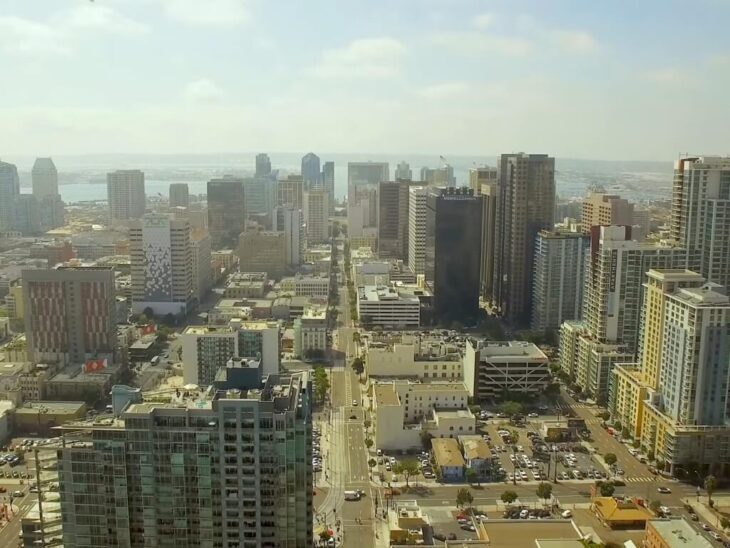
San Diego offers a laid-back lifestyle with beautiful coastal views, but these come with a price. Rental prices in areas such as La Jolla and Downtown San Diego remain high, while more affordable options can be found in neighborhoods like North Park or Clairemont.
San Diego is also home to a large military presence, which contributes to housing demand. As a result, rent is generally on the high side, with transportation costs and utilities further adding to the cost of living.
| City | Average Rent (1-Bedroom) | Median Household Income | Utilities | Transportation | Grocery Cost (One Person) |
| San Diego, CA | $2,300 | $81,000 | $160/month | $72 (MTS pass) | $320/month |
8. Seattle, WA
Seattle’s rapid growth, fueled by the tech industry and companies like Amazon, continues to keep rental prices high.
Areas such as Capitol Hill and Belltown are among the most expensive, while places further from the city center, like Ballard and Greenwood, do offer relatively more affordable rental options.
The cost of living is on the higher end for the U.S., with transportation and utilities playing significant roles in overall expenses.
| City | Average Rent (1-Bedroom) | Median Household Income | Utilities | Transportation | Grocery Cost (One Person) |
| Seattle, WA | $2,200 | $94,000 | $140/month | $99 (ORCA card) | $350/month |
9. Chicago, IL
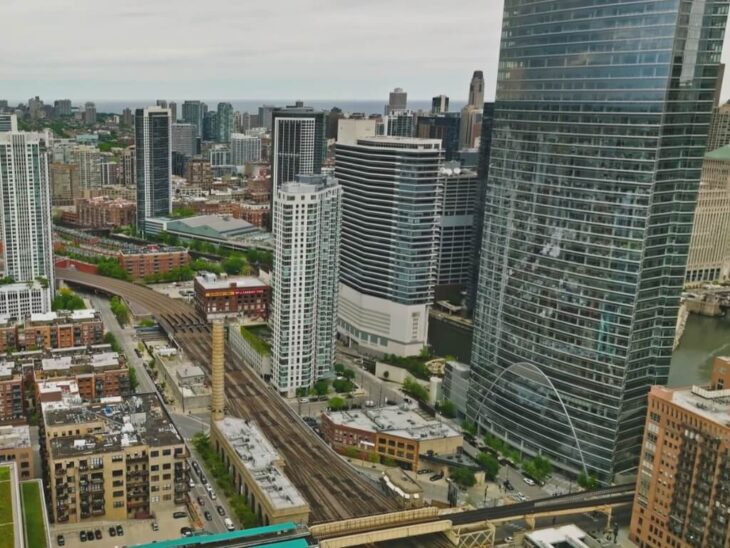
Chicago, known for its deep history, diverse culture, and strong economic foundations, offers a broad spectrum of rental prices.
The downtown area and neighborhoods like Gold Coast, Lincoln Park, and River North tend to have the highest rent, but you can still find more affordable housing in areas like Hyde Park and Logan Square.
While Chicago’s rent prices have been rising, they remain relatively affordable compared to other major cities such as New York or San Francisco.
Utilities and transportation are moderate, though grocery prices tend to be slightly higher than in some other parts of the country.
| City | Average Rent (1-Bedroom) | Median Household Income | Utilities | Transportation | Grocery Cost (One Person) |
| Chicago, IL | $2,100 | $65,000 | $150/month | $100 (CTA pass) | $340/month |
10. Philadelphia, PA
Philadelphia is a historic and thriving city with a diverse economy, drawing renters from all walks of life. Rent prices here remain relatively affordable compared to other large metropolitan cities, making it an attractive option for those who want urban amenities without the steep costs.
While areas like Rittenhouse Square and Old City have high rental rates, neighborhoods like Fishtown and Point Breeze offer more affordable options.
Utilities and transportation in Philadelphia are moderately priced, with an extensive public transit system that helps make commuting more manageable.
If you’re looking for affordable rental options for Philly, it can be helpful to look into websites like www.spareroom.com, which specializes in connecting people looking for roommates or shared accommodations.
| City | Average Rent (1-Bedroom) | Median Household Income | Utilities | Transportation | Grocery Cost (One Person) |
| Philadelphia, PA | $2,000 | $59,000 | $140/month | $100 (SEPTA pass) | $330/month |
11. Miami, FL
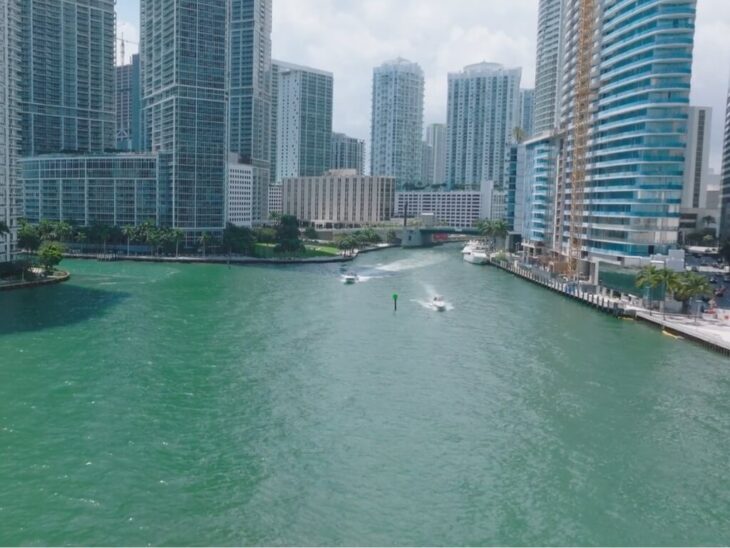
Miami offers vibrant culture, a booming economy, and proximity to some of the most beautiful beaches in the U.S., but it also comes with high living costs.
Rental prices in neighborhoods such as South Beach, Brickell, and Coconut Grove can be high, though more affordable options can be found in areas like Little Havana and Wynwood.
Miami’s cost of living is heavily influenced by the popularity of the city as a tourism and finance hub, leading to high transportation and utility costs in addition to rent.
| City | Average Rent (1-Bedroom) | Median Household Income | Utilities | Transportation | Grocery Cost (One Person) |
| Miami, FL | $1,950 | $51,000 | $160/month | $112 (Metrorail pass) | $350/month |
12. Atlanta, GA
Atlanta, the largest city in the Southeastern U.S., is known for its affordable rent prices relative to other major cities.
With a booming film industry, expanding tech scene, and rich cultural history, Atlanta offers a wide variety of rental options at lower prices.
Neighborhoods like Midtown and Buckhead tend to be more expensive, while areas like East Atlanta Village and Old Fourth Ward offer more affordable choices.
Despite the relatively lower rent, utilities and transportation costs are moderate, and groceries remain reasonably priced.
| City | Average Rent (1-Bedroom) | Median Household Income | Utilities | Transportation | Grocery Cost (One Person) |
| Atlanta, GA | $1,610 | $62,000 | $140/month | $95 (MARTA pass) | $320/month |
13. Denver, CO
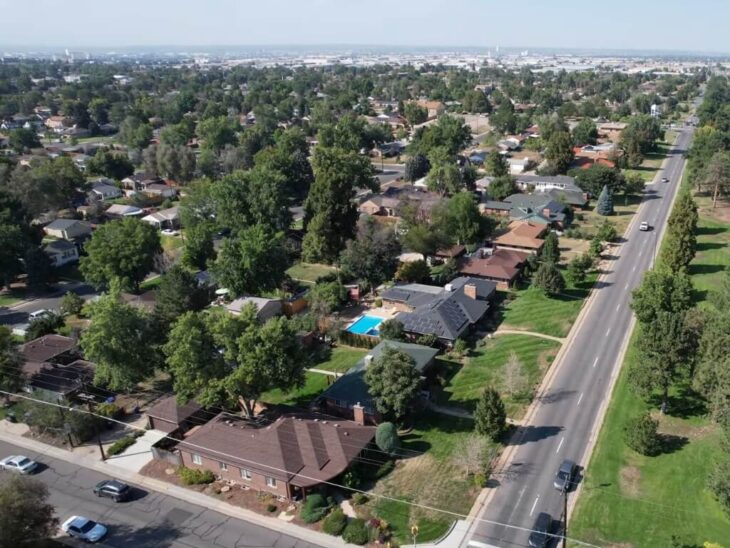
Denver has emerged as a sought-after city for young professionals and outdoor enthusiasts alike, contributing to steady demand for rental properties.
Neighborhoods like LoDo, Cherry Creek, and Washington Park have high rental prices, while more affordable options can be found in areas like West Colfax and Sloan’s Lake.
The cost of living in Denver is fairly high, primarily due to rental prices and the relatively high cost of groceries. However, transportation remains more affordable with an efficient light rail system.
| City | Average Rent (1-Bedroom) | Median Household Income | Utilities | Transportation | Grocery Cost (One Person) |
| Denver, CO | $1,600 | $68,000 | $150/month | $114 (RTD pass) | $340/month |
14. Austin, TX
Austin is renowned for its thriving tech scene, live music culture, and relatively affordable living costs compared to other tech hubs like San Francisco.
Although rental prices in Downtown Austin and South Congress remain high due to the demand from tech professionals, you can find more affordable rental prices in areas like North Austin and East Austin.
The cost of living in Austin is low compared to cities on the East and West Coasts, with utilities and groceries priced lower than national averages.
| City | Average Rent (1-Bedroom) | Median Household Income | Utilities | Transportation | Grocery Cost (One Person) |
| Austin, TX | $1,590 | $71,000 | $130/month | $70 (CapMetro pass) | $300/month |
15. Dallas, TX

Dallas is one of the largest and most economically diverse cities in the U.S. The rental market is competitive, with areas like Uptown, Downtown, and Deep Ellum commanding higher rent prices. However, the city’s cost of living remains relatively affordable when compared to other major U.S. cities.
Dallas offers a good balance between affordable housing and high-quality amenities. Transportation and utilities are also priced reasonably, making Dallas an attractive option for young professionals and families alike.
| City | Average Rent (1-Bedroom) | Median Household Income | Utilities | Transportation | Grocery Cost (One Person) |
| Dallas, TX | $1,580 | $66,000 | $140/month | $80 (DART pass) | $330/month |
16. Houston, TX
Houston offers a relatively affordable housing market, with rental prices that are much lower compared to cities like New York and San Francisco.
Known for its energy sector and growing tech scene, Houston has a broad range of neighborhoods, from the luxurious River Oaks and Midtown areas to more affordable options in The Heights or West Houston.
The cost of living in Houston is among the lowest in the U.S. for major metropolitan areas, with utilities and transportation costs significantly lower than the national average.
| City | Average Rent (1-Bedroom) | Median Household Income | Utilities | Transportation | Grocery Cost (One Person) |
| Houston, TX | $1,570 | $60,000 | $130/month | $55 (METRO pass) | $300/month |
17. Phoenix, AZ

Phoenix, with its consistently warm weather and booming population, remains one of the more affordable cities in the U.S.
The city’s rental market is diverse, with more expensive options in areas like Downtown Phoenix and Scottsdale, while suburban neighborhoods such as Tempe and Glendale offer more budget-friendly rentals.
With lower taxes and a lower cost of living, Phoenix is attractive to both retirees and young professionals seeking an affordable lifestyle without compromising on amenities.
| City | Average Rent (1-Bedroom) | Median Household Income | Utilities | Transportation | Grocery Cost (One Person) |
| Phoenix, AZ | $1,560 | $60,000 | $120/month | $64 (Valley Metro) | $280/month |
18. Portland, OR
Portland is a city known for its progressive culture, environmental consciousness, and vibrant arts scene. While rent prices have climbed in recent years, Portland remains more affordable than other West Coast cities like San Francisco and Seattle.
Areas such as the Pearl District and Southwest Portland offer higher rent options, while neighborhoods like North Portland and St. Johns provide more affordable alternatives.
The city’s commitment to public transportation and sustainability adds to its overall appeal.
| City | Average Rent (1-Bedroom) | Median Household Income | Utilities | Transportation | Grocery Cost (One Person) |
| Portland, OR | $1,550 | $68,000 | $150/month | $100 (TriMet pass) | $320/month |
19. Minneapolis, MN

Minneapolis offers a relatively affordable cost of living while still providing residents with excellent access to parks, cultural activities, and a growing tech scene.
The city’s rent prices are some of the lowest in the top U.S. cities, with trendy neighborhoods like Uptown and North Loop offering higher rent and more suburban areas, such as South Minneapolis and Northeast Minneapolis, offering more affordable options.
Public transportation, including buses and the light rail, helps residents manage transportation costs.
| City | Average Rent (1-Bedroom) | Median Household Income | Utilities | Transportation | Grocery Cost (One Person) |
| Minneapolis, MN | $1,540 | $70,000 | $140/month | $90 (Metro pass) | $310/month |
20. Tampa, FL
Tampa’s rental market has been on the rise due to its favorable weather, low taxes, and growing job market in industries like healthcare, finance, and technology.
While areas like Hyde Park and Downtown Tampa can be pricey, more affordable rental options can be found in Ybor City and Seminole Heights.
Additionally, Tampa’s overall cost of living remains lower than many other major U.S. cities, making it an attractive destination for renters.
| City | Average Rent (1-Bedroom) | Median Household Income | Utilities | Transportation | Grocery Cost (One Person) |
| Tampa, FL | $1,530 | $58,000 | $130/month | $100 (HART pass) | $280/month |
21. Charlotte, NC
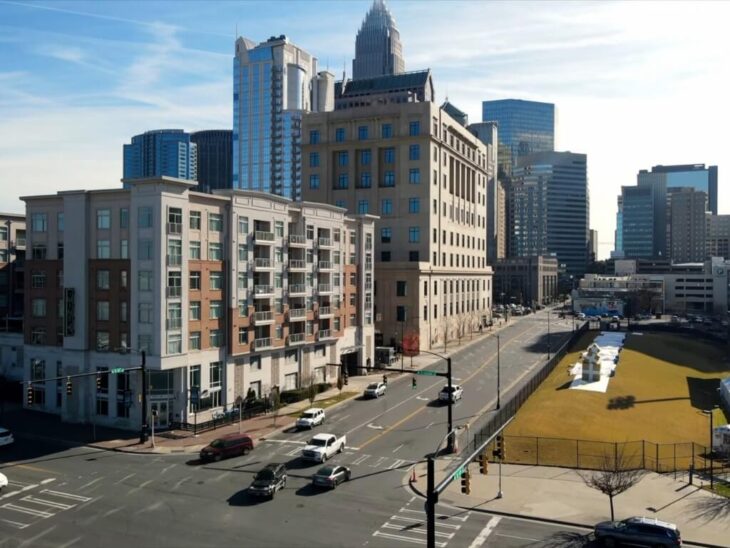
Charlotte, known as the financial capital of the South, continues to attract both professionals and families with its low cost of living, strong job market, and abundant amenities. Rent prices are affordable, especially when compared to cities like New York or San Francisco.
South End and Uptown Charlotte feature higher rent, while neighborhoods like NoDa and Plaza Midwood offer more affordable alternatives. The city’s overall cost of living remains low, making it an appealing option for renters.
| City | Average Rent (1-Bedroom) | Median Household Income | Utilities | Transportation | Grocery Cost (One Person) |
| Charlotte, NC | $1,520 | $62,000 | $120/month | $90 (CATS pass) | $300/month |
22. Kansas City, MO
Kansas City is known for its affordable living costs and strong local economy, particularly in sectors like tech, healthcare, and manufacturing.
The city’s rental prices remain low compared to the national average, with neighborhoods like Downtown and Westport commanding higher rents, while Midtown and Brookside offer more budget-friendly options.
Transportation and utilities in Kansas City are also cheaper than in many other U.S. cities, contributing to the overall affordability of living there.
| City | Average Rent (1-Bedroom) | Median Household Income | Utilities | Transportation | Grocery Cost (One Person) |
| Kansas City, MO | $1,510 | $55,000 | $130/month | $80 (RideKC pass) | $270/month |
23. St. Louis, MO
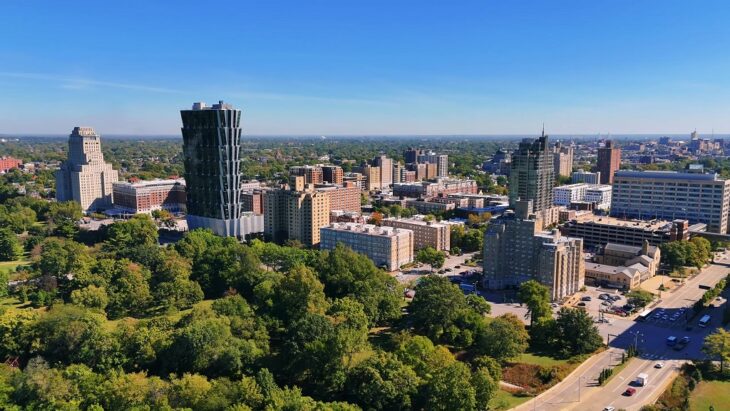
St. Louis offers some of the lowest rental prices in the country, making it an ideal location for those looking for an affordable place to live.
The city’s rental market is quite varied, with expensive areas like Central West End and Clayton, while more affordable housing can be found in neighborhoods like Tower Grove and South City.
St. Louis’s overall cost of living is low, making it a prime spot for families and individuals looking to stretch their dollar further.
| City | Average Rent (1-Bedroom) | Median Household Income | Utilities | Transportation | Grocery Cost (One Person) |
| St. Louis, MO | $1,500 | $50,000 | $120/month | $80 (MetroLink pass) | $260/month |
24. Indianapolis, IN
Indianapolis continues to be one of the most affordable cities in the U.S. when it comes to rent.
With a lower cost of living, the city offers good value for renters, particularly in areas like Broad Ripple and Fountain Square, which provide more affordable options compared to larger cities.
The overall cost of living, including transportation and utilities, is among the lowest in the country, making it an attractive option for young professionals, families, and retirees alike.
| City | Average Rent (1-Bedroom) | Median Household Income | Utilities | Transportation | Grocery Cost (One Person) |
| Indianapolis, IN | $1,490 | $58,000 | $110/month | $60 (IndyGo pass) | $250/month |
25. Columbus, OH

Columbus is another city offering low rental prices compared to larger metropolitan areas. With a growing job market and excellent educational institutions like Ohio State University, it’s becoming a popular city for students and young professionals.
The city’s rental market is affordable across most neighborhoods, including Short North and German Village, with utilities and transportation costs also being on the lower side.
| City | Average Rent (1-Bedroom) | Median Household Income | Utilities | Transportation | Grocery Cost (One Person) |
| Columbus, OH | $1,480 | $61,000 | $100/month | $75 (COTA pass) | $240/month |



